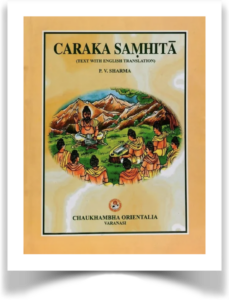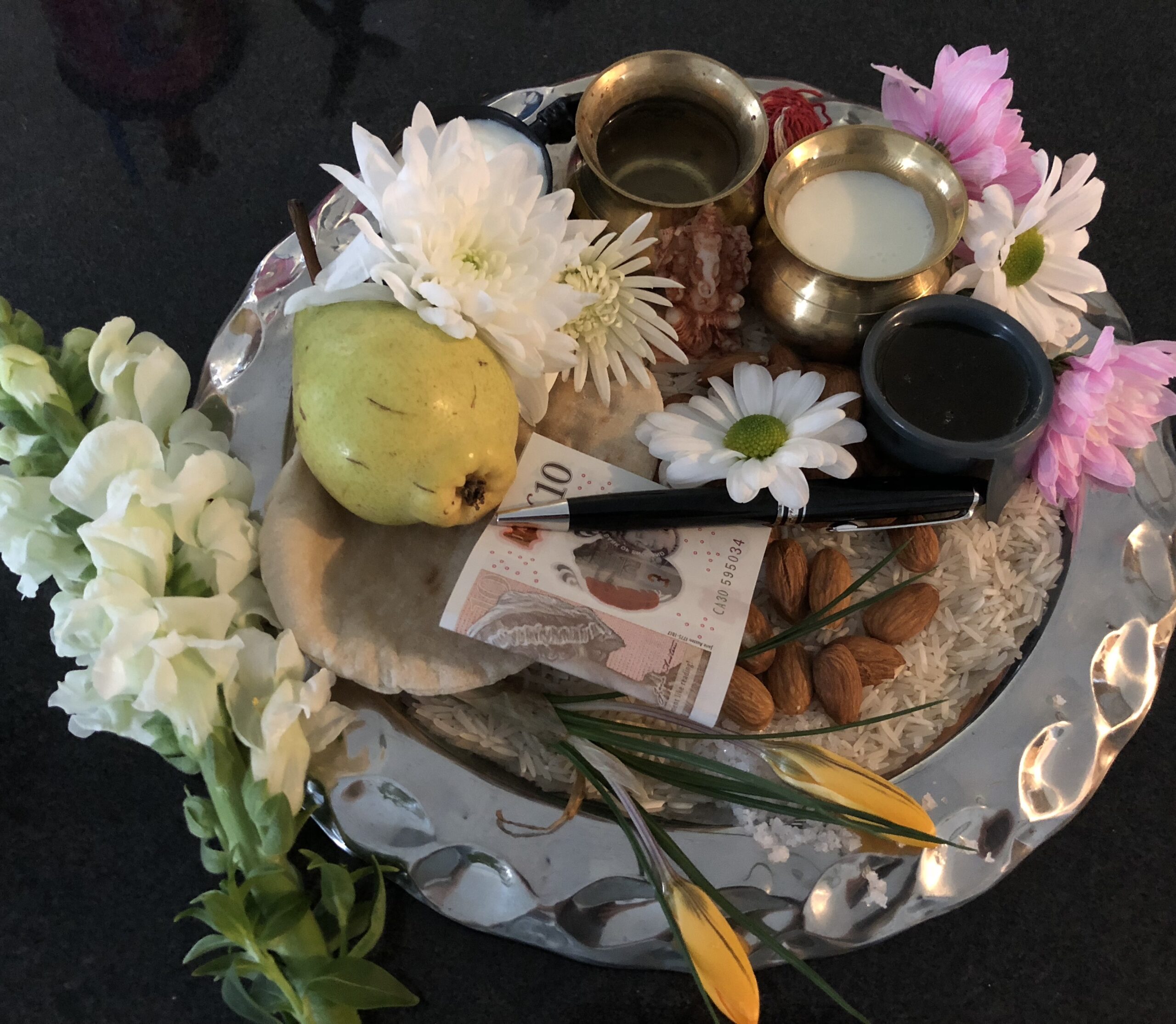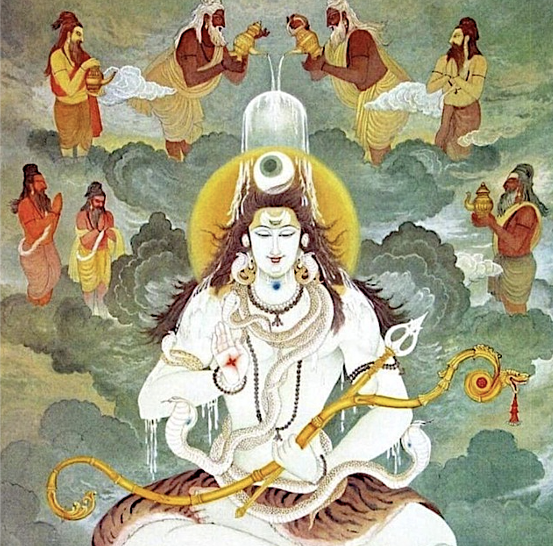
The Oneness Healing Incense of India
Rakesh Kaul
The Hebrew Bible and the Talmud tell us that twice a day, Ketoret, a mysterious, costly and powerful incense mixture was burned in the Holy Temple in Jerusalem. While there is uncertainty about the 11 spices that went into the incense mix one item was clearly spelled out in the Talmud. The Israelis called it Kosht (costus) and it has been identified as having originated in Kashmir! Encyclopaedia Britannica grants it as such. Moshe Rabeinu, better known as Moses, is reported to have prepared special anointing oil of which Kosht was a core ingredient. In a total mix of 636 kilograms it represented 212 kilograms or one third of the total.
With its origins in Kashmir, Kustha (Sanskrit, Kashmiri Kuth) was accorded high honour as a Vedic plant god. It was considered as the brother of the divine Soma. The Kashmiri Pandits of yore held Kustha’s powers in great esteem. Charaka, circa 300 B. C., a native of Kashmir and a principal contributor to Ayurveda medical science rated Kustha as one of the safe Avachurnana (sprinkling of powder) items for treatment of a variety of skin conditions. The patient was first smeared with sesame oil and then lightly dusted. A paste made with sandalwood was used to relieve headaches, shoulder and back pain. Today, it is the main ingredient in massage oils though it is not approved because of sensitivity issues by the International Fragrance Association. Kustha was not limited to topical applications only. It was used for anti-viral, respiratory, liver, leprosy, rheumatism, digestion, fertility enhancement applications also.
The Israeli Kashmiri connection created by this magical Kustha indicates that the Spice route predated the Silk route by over a thousand years. This identical word is one more maddening commonality between Hebrew and Kashmiri language. While there is no support for the thesis that one is descended from the other or that there is commonality it suggests that the degree of exchange and interchange was higher than is believed today. This is a connection that needs to be revived and reestablished for more reasons than one.

Use of incense was adopted by the early Christian church, the Catholic church and especially the Eastern Orthodox church. While Frankincense was the cheaper local source the Orthodox church especially continued to use costus. In Scenting Salvation: Ancient Christianity and the Olfactory Imagination Susan Ashbrook Harvey, a Professor of Religious Studies at Brown University, argues that the bodily senses were utilized as crucial instruments of human-divine interaction. While the Protestant movement backed off from the use of scents it is noteworthy that Protestants in the US when they do Yoga have rediscovered the benefits of incense in meditation. Jesus Christ would smile here because did not the Magi burn incense for the baby Jesus?
Kust or Qust in Arabic or Persian was an integral part of Islamic medicine also. In Sahih Bukhari’s Volume 7, Book 71, Number 596: Narrated Um Qais bint Mihsan: I heard the Prophet saying, “Treat with the Indian incense (oud al-hindi), for it has healing for seven diseases; it is to be sniffed by one having throat trouble, and to be put into one side of the mouth of one suffering from pleurisy.” There is an extended enumeration of the benefits of Qust by the messenger.
In my historical fiction novel, The Last Queen of Kashmir, the real life story of Kotha Rani in the 14th century, I write about a Chinese caravan heading out of the Valley carrying with it the precious costus or Kuth. It was a prized import for the Chinese and they used it in joss sticks and incense as part of Buddhist ceremonies. Ditto for the Tibetans. Chinese traders would come to Khilanmarg where the local farmers would grow the Kuth. The price for the Kuth was its weight in silver and security guards would be placed day and night to monitor for poachers.
It is interesting to contemplate that the five great Religions of the world Judaism, Christianity, Buddhism, Islam and Hinduism, each used the humble Kuth messenger from Kashmir to carry the aspirations and desires of their adherents seeking the highest experience of the divine.
Given its value Kuth became the most valuable herbal export out of Kashmir during colonial times as written by Walter R. Lawrence. Smugglers killed border guards in Zanskar as per one report. But most of the product was shipped to Amritsar and then to Calcutta and finally onto China by sea. In the year 1837-1838 A. D. nearly 260,000 Kgs. were shipped. The State introduced a legislative act in 1921 to impose a monopoly on the trade. The export to China continued uninterruptedly until the 1962 Indo China war after which China started producing its own Kuth.
Not surprisingly the rampant over collection of Kuth from the wild by freebooters and smugglers resulted in it becoming nearly extinct. The cultivated portion declined due to the extinction of the China trade. In fact, China began exporting to India and during the time period of 2005 -2007 385,270 Kgs were brought in. Suddenly the very future of Kuth was at stake and it went on the list of imperiled species. It became one of the items that was globally forbidden for international trade. The State of Jammu and Kashmir passed a regulation in 1978 prohibiting the use of Kuth unless by permission. In 2002 it rescinded the law but then in 2005 it once again completely banned collection from the wild. Government of India has it on its list of forbidden export items. While the JK Medicinal Plants Introduction centre provides seeds, the three year gestation period coupled with the restrictions has made Kuth cultivation a non starter. So, a plant that once brought beauty and divinity to known humanity and with it prosperity to Kashmir is today only to be found in seed banks and safe reservations! Is there a striking resemblance here to the story of the Kashmiri Pandits themselves?
When one looks at the Kuth plant one may be taken aback. Given all the near medical miracles that this plant can do for us it is surprising to learn that it belongs to the common nettles family. Kashmiri Pandits may even experience a tingling sensation in their bottoms. Kuth is related to another sister garden variety of nettles called soi which was used to administer punishment on errant boys (mostly) in Kashmir. But what the touch-me-not flower and plant with stinging leaves was jealously guarding was its roots. It is here that the magical power of the plant lies.
The ‘Roots of Kashmir’ have a hoary history. Today, there is an indigenous demand for 150-200 metric tonne of the medicinal product for use in the Indian herbal industry alone. ‘Make in India’ should find an easy application here once political will is deployed to remove counterproductive regulation and barriers, the way China has. With that done not only will the Kashmiri residents find gainful opportunity but the indigenous knowledge of the Kashmiri Pandits will once again be put to good use. May the fragrance of Kuth (and the Kashmiri Pandits who unlocked its secrets) once again pervade the homeland of Rishi Charaka and continue to bring healing and oneness to humanity.






